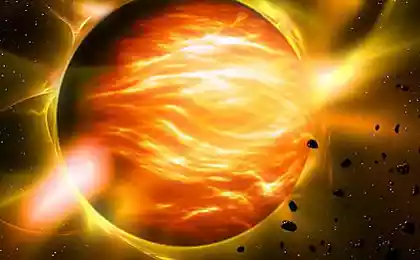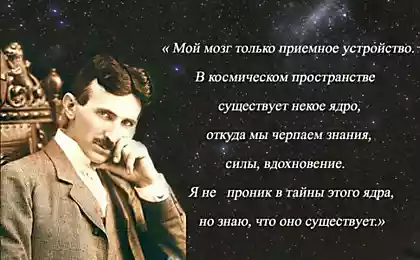1197
A bit of sun

The sun was just one of 200 billion stars in our galaxy "Milky Way».
The sun was just one of 6,000 stars are visible to the naked eye from Earth.
The mass of the Sun is 1.989 · 1030 kg = 333 000 Earth masses.
The energy of the Sun is 386 billion billion megawatts.
Earth receives 94 billion megawatts of energy from the sun. It is 40 000 times more than the annual demand of the United States.
Reactions taking place on the Sun is nuclear fusion.
Every second, 700 million tons of hydrogen are converted to the Sun 695 million tons of helium and 5 million tons of energy in form of gamma rays.
Every second the Sun loses 5 million tons of material.
The temperature of the sun at its core - 14 million Kelvin.
The sun is concentrated 99, 866% of the mass of the solar system.
The pressure in the core of the sun at 340 billion times the Earth's atmospheric pressure.
The diameter of the Sun is equivalent to 109 Earth diameters.
The surface area is equivalent to 11,990 Suns Earth's surface.
The volume of the Sun is 1.3 million times larger than the planet Earth.
If the sun were the size of a soccer ball, Jupiter would be the size as a golf ball, and the Earth would be the size of a pea.
The force of gravity on the surface of the Sun is 28 times greater than on Earth.
A person weighing 60 kg on Earth, will weigh 1680 kg in the sun.
Unlike the Earth, the Sun completely gaseous on the Sun has no solid surface.
By weight of Sun has the following composition: 73% hydrogen, 25% helium, 1.5% carbon, nitrogen, oxygen, and all other elements 0.5%.
In terms of the Sun consists of hydrogen at 92.1%, helium at 7.8% and 0.1% all other elements.
The sun is at a distance of millions of 149.60 km. from Earth.
Light from the sun reaches the Earth for 8.3 minutes.
Gravity of the sun is so strong that even Pluto, a planet located on rasstoyanii5.9 billion kilometers from the Sun is in its orbit.
Light from the sun reaches Pluto for 5.5 hours.
The closest planet to the Sun is a star Proxima Chentauri. 4.3 light-years away.
If the Sun was an inch in diameter, the nearest star would be at a distance of 445 miles.
The sun - not a solid body, such as the Earth, so different areas of the Sun rotate at different speeds.
Rotation of the Sun at the equator is about 25 days, whereas in the polar regions is - as much as 36 days.
The sun also emits electrons and protons, known as the solar wind and its speed of 450 kilometers per second.
Approximately one trillion solar neutrinos pass through your body, while you read this sentence.
Solar flares - powerful explosions occurring in the solar atmosphere. Solar flares can occur at a distance of more than 100, 000 miles from the sun.
The brightness of the sun is equivalent to the brightness of the 4 trillion trillion light bulbs of 100 watts.
Area solar surface the size of a postage stamp shines as 1, 5 million candles.
The amount of energy reaching the earth's surface, in 6000 times more energy needs of people around the world.
Total fossil fuel land equivalent to 30 days of sunshine.
The total solar eclipse can not last longer than 7 minutes and 40 seconds.
In the year may occur up to 5 solar eclipses.
Age of the Sun is 4.57 billion years old.
Scientists predict that the sun will continue to exist for about 5 billion years.
After 1.1 billion years, the Sun will be 10% brighter than today. The Earth's atmosphere completely dry up, turning into steam.
After 3.5 billion years, the Sun will be 40% brighter than today. The atmosphere will disappear.
After 5.4 billion years the Sun will run out of hydrogen.
After 7.7 billion years, the Sun will become a red giant - to expand up to 200 times.
After 7.9 billion, the sun will be a white dwarf.























